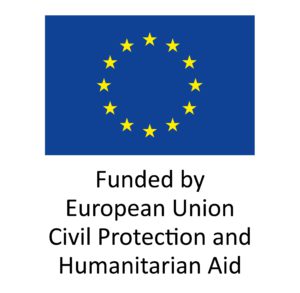The role of an aid worker

Timothy Cohen from CAFOD’s emergency response team reflect back on his visit to Nepal. He talks about the role of an aid worker.
If someone tells you they’re an ‘aid worker’, how would you picture them? You probably think of someone who’s any (or all) of the following:
- Photogenic (which rules me out!)
- Emotive

- Holding a clipboard in a t-shirt with a cool logo
That’s certainly how we (the aid sector) have sold ourselves to the public for the past 20 years. It’s good for our image and our branding. And it’s not untrue either; but it doesn’t tell the whole story.
But if you’ve paid close attention, maybe you’ve noticed this narrative changing slightly over the past few years? Maybe you’ve noticed that members of the local communities, and the organisations that they work for, are in the spotlight more and more?
Help us respond to emergencies
The role local people play when disaster strikes
This isn’t by accident; it’s by design. Around the world, there’s been a shift in the way the aid sector acknowledges the role that local people play when a disaster strikes their community. As a sector we’re telling their story better, and we’re doing a better job of listening to them.

Actually, CAFOD has always been pretty good about this. We’ll prioritise telling our supporters about what our partners are doing, before sharing stories about our own staff. And we want to hear how we can help our partners, not how they can work for us.
This is the approach that I’ve believed in since I started working at CAFOD 5 years ago. But even I hadn’t really appreciated how important it is for the voice of our partners to be heard. That is, until I visited Nepal with CAFOD earlier this summer.
CAFOD calls for local responses in Nepal
Responding to the Nepal earthquake
CAFOD responded to the devastating Nepal earthquake in 2015. We supported shelter (housing) and WASH (water, sanitation and hygiene) programmes, mainly through our Church partner Caritas Nepal, but also through other local organisations. Our earthquake response programme actually finished a few months ago, but not before I was able to visit the country. I flew out with my boss to run a training for local Nepali organisations who are members of the NEAR Network. NEAR stands for Network for Empowered Aid Response. Supported by CAFOD and part-funded by the European Union, it’s, a global movement of local organisations whose vision is ‘to ensure genuine local participation at all levels of development and disaster management, and that effective aid is delivered to people in need’.
Over 3 days we shared with NEAR’s Nepalese members how to raise awareness of issues that affect their projects, and to tell the story of the inspiring work that they are doing. But actually, it was a learning experience for me as well, and one story in particular stands out.
Ordinary people helping others in their community
This is the story of the grandfather who is working as an accountant for a local charity. He’d been a banker for 30 years but moved on from that sector because he felt that his skills could be used in a setting where he could do more to help people. When the earthquake struck three years ago, this man’s expertise helped peoples’ lives in a way he probably never would have predicted. In a country where few can afford to go to get a good education, people simply won’t have the chance to learn skills such as budgeting and good financial management. This man was able to share his knowledge and experiences with people in these communities, and made sure that when assistance arrived, the money was used efficiently and responsibly, to help people rebuild their homes, businesses and their lives.

On top of the important stories this man, and others, shared with us, there was also an intense pride of being a Nepali, helping Nepalis. The whole classroom felt this way, but the grandfather-banker-aid worker reminded us, several times, that ‘99% of people rescued after the earthquake were rescued by Nepalis’. When they needed help the most, it wasn’t someone in a cool logo t-shirt; it was it was ordinary people helping others in their community.
That visit changed what I thought it meant to be an ‘aid worker’, I’ll always have the image now; of a Nepali grandfather who just wanted to help his neighbours.